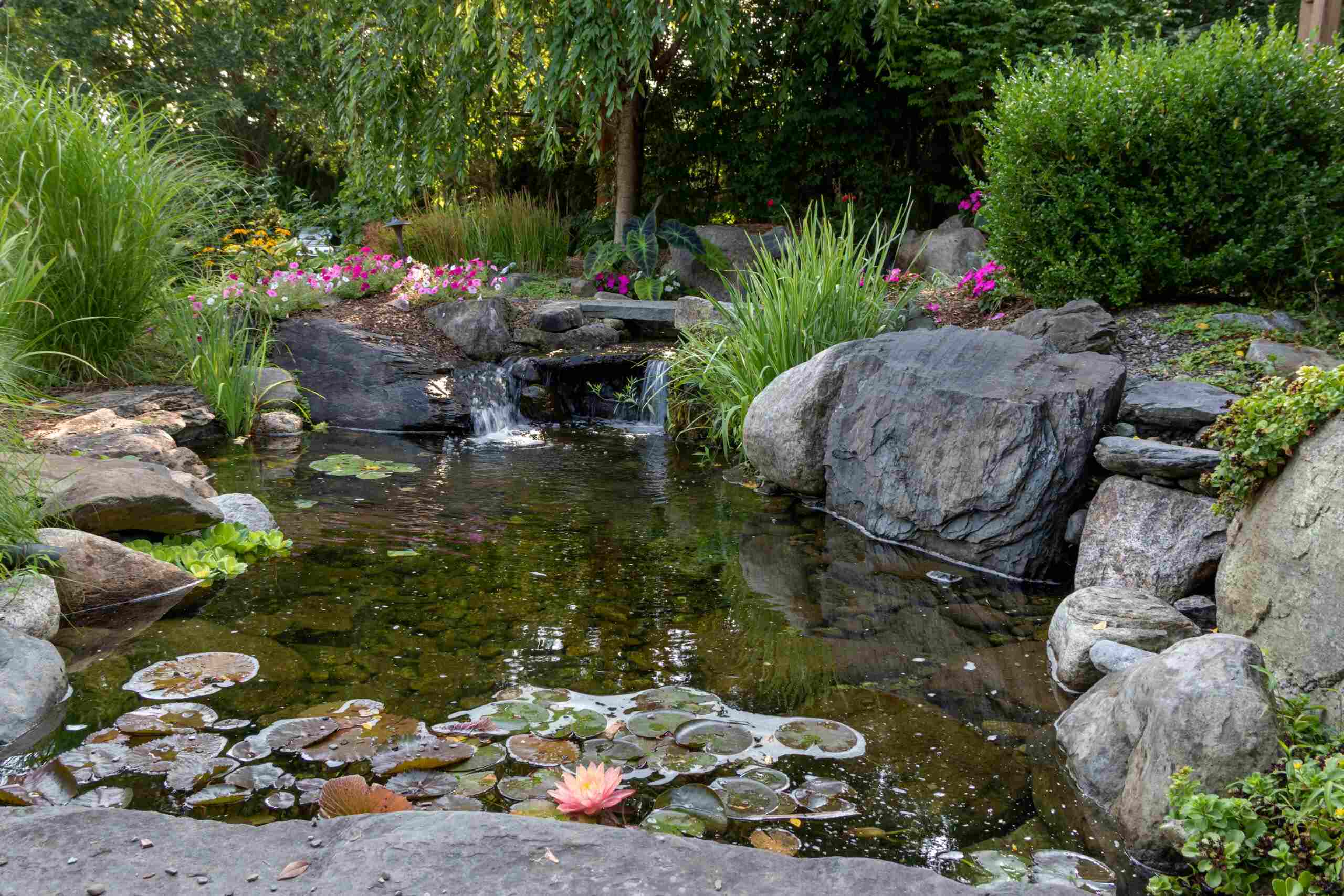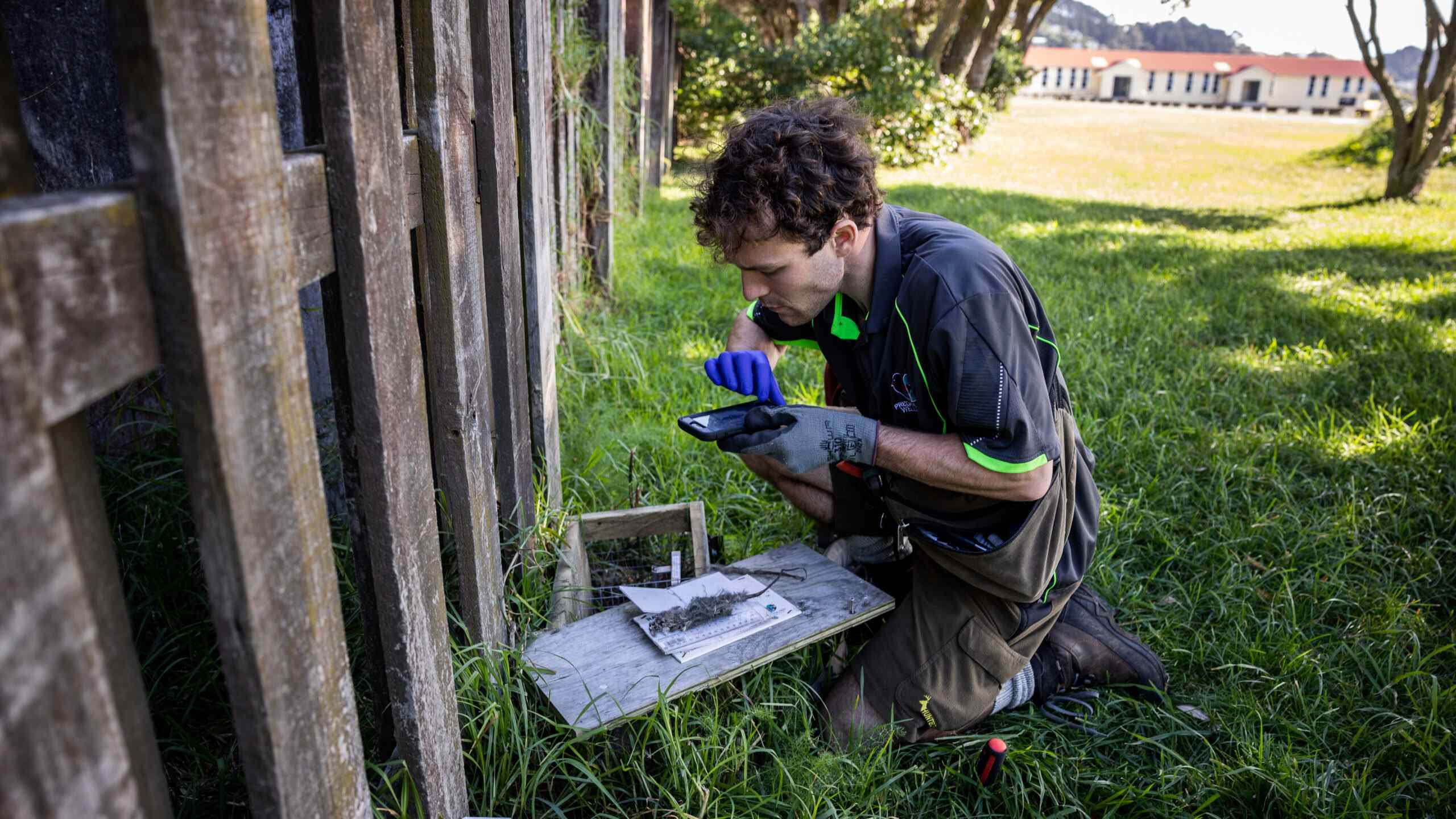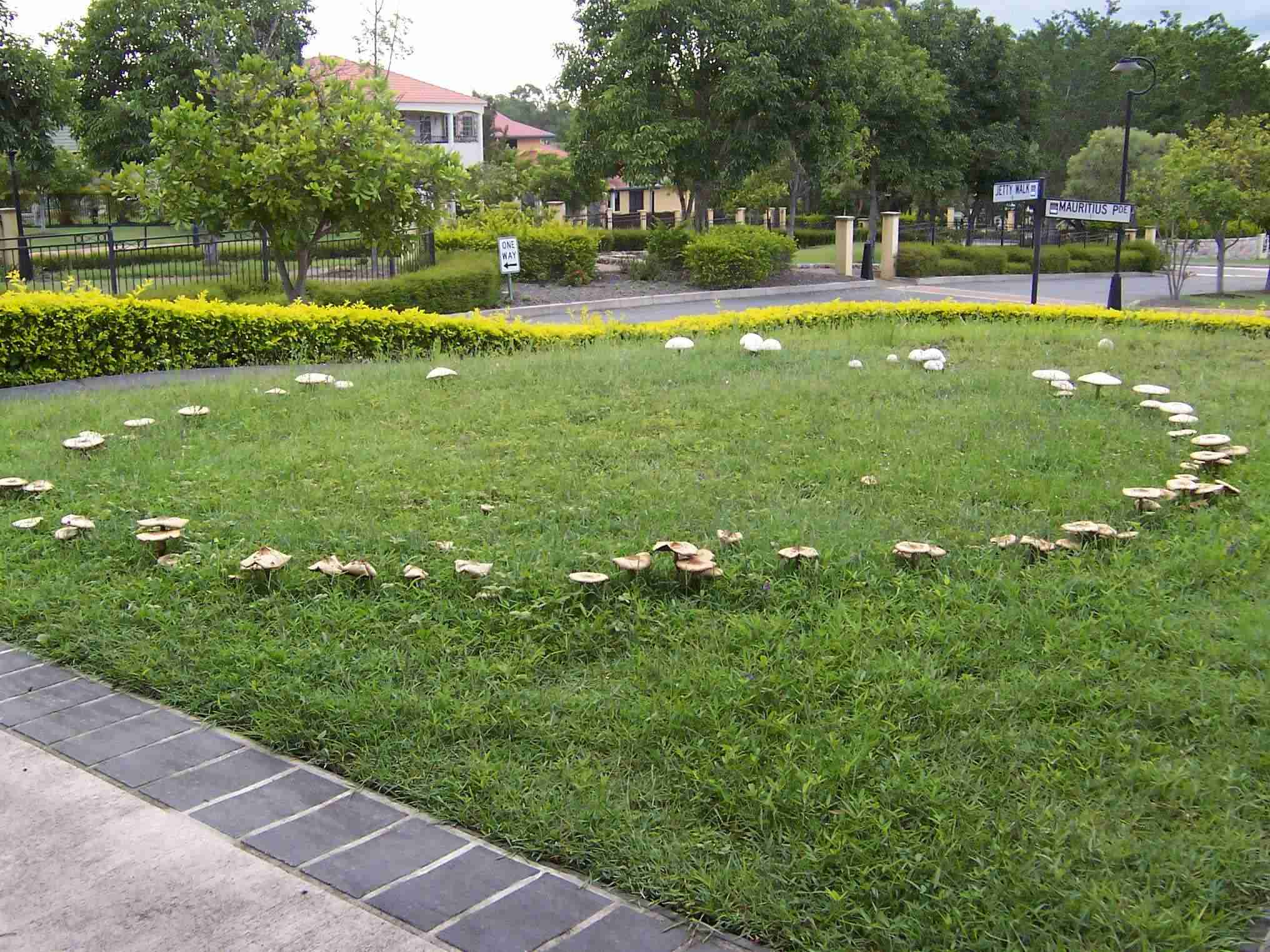Home>Gardening Tips and Tricks>How To Get Rid Of Frogs In Backyard


Gardening Tips and Tricks
How To Get Rid Of Frogs In Backyard
Modified: January 22, 2024
Get rid of frogs in your backyard easily with our problem-solving tips and techniques. Say goodbye to unwanted amphibian visitors and enjoy a frog-free outdoor space.
(Many of the links in this article redirect to a specific reviewed product. Your purchase of these products through affiliate links helps to generate commission for Chicagolandgardening.com, at no extra cost. Learn more)
Table of Contents
- Introduction
- Understanding the Presence of Frogs in Your Backyard
- The Importance of Assessing the Need to Get Rid of Frogs
- Natural Ways to Deter Frogs from Your Backyard
- Limiting Food Sources
- Eliminating Standing Water
- Creating a Less Attractive Environment for Frogs
- Chemical Methods to Remove Frogs from Your Backyard
- Commercial Frog Repellents
- Chemical Barriers and Deterrents
- Seeking Professional Pest Control Assistance
- Ethical Considerations When Removing Frogs from Your Backyard
- Conclusion
Introduction
Welcome to your backyard, a place where you can relax and enjoy nature’s beauty. But what happens when your peaceful sanctuary is invaded by a chorus of croaks, courtesy of a multitude of frogs? While frogs might be fascinating creatures, their presence in your backyard can be overwhelming and disruptive. Whether you’re dealing with a single persistent frog or an entire amphibian population, it’s important to find effective ways to get rid of them without causing harm.
Before diving into the solutions, it’s essential to understand why frogs are attracted to your backyard in the first place. Frogs are drawn to environments that provide them with food, water, and shelter. Your backyard may offer an abundance of these resources, making it an irresistible habitat for these amphibians.
Assessing the need to get rid of frogs is crucial. While frogs can be beneficial for controlling insect populations, an overabundance of them can disrupt the ecological balance and pose potential risks. Excessive frog populations in your backyard can negatively impact the aesthetics, as well as disturb the peace and tranquility that you seek in your outdoor space.
Now that we understand the reasons behind frogs’ attraction to your backyard and the potential need to remove them, let’s explore natural methods to deter these amphibious intruders. These methods are safe, environmentally-friendly, and have the added benefit of preserving the delicate balance of your backyard ecosystem.
Understanding the Presence of Frogs in Your Backyard
If you find yourself sharing your backyard with frogs, it’s important to understand why they are drawn to your outdoor space. Frogs are attracted to areas where they can find an abundance of food, water, and shelter. By identifying these factors, you can work towards creating an environment less appealing to frogs.
One of the primary reasons frogs may take up residence in your backyard is the availability of food. Frogs are insectivores and thrive in locations with a plentiful supply of insects, such as flies, mosquitoes, and beetles. If your yard has tall grass, standing water, or an overgrown garden, it can become a prime hunting ground for frogs. These areas offer ample opportunities for frogs to find and consume their favorite meals.
Another consideration is the presence of water sources in your backyard. Frogs, like any other amphibious creatures, require water for breeding and survival. If you have a pond, birdbath, or even a small puddle in your yard, these can become attractive habitats for frogs. The availability of water encourages frogs to lay their eggs and establish their territories, leading to an increase in their population.
Lastly, the presence of suitable hiding spots and shelter can contribute to the attraction of frogs to your backyard. Frogs seek out places where they can find protection from predators and extreme weather conditions. Dense vegetation, piles of leaves, and shaded areas are all potential hiding spots that can create an ideal frog habitat.
By understanding the reasons why frogs are present in your backyard, you can take appropriate measures to deter them and create an environment less welcoming to these amphibious creatures. The next section will explore natural ways to deter frogs effectively, ensuring a harmonious and peaceful backyard space.
The Importance of Assessing the Need to Get Rid of Frogs
Before taking any action to remove frogs from your backyard, it’s crucial to assess the need for their removal. While frogs can be beneficial in controlling insect populations and contributing to the natural balance of your ecosystem, there are instances where their presence may become problematic.
One important consideration is the impact of an overabundance of frogs on the aesthetics of your backyard. While a few frogs can add a touch of charm to the environment, an excessive number of them can lead to a visually unappealing situation. The constant croaking and movement of frogs can disrupt the peace and tranquility that you seek in your outdoor space, making it less enjoyable to spend time in your backyard.
Another factor to consider is the potential for ecological disruption. When frog populations are too high, they can upset the ecological balance of your backyard. This imbalance can affect other species and disrupt the natural food chain. For example, an excess of frogs may deplete food sources for other wildlife or impact beneficial insects, such as pollinators, by consuming them at a rapid rate. Assessing the ecological impact of frog populations is crucial to maintaining the health and sustainability of your backyard ecosystem.
In addition to aesthetics and ecological factors, there are practical considerations to evaluate as well. For example, if you have a pet that enjoys spending time in the backyard, the presence of frogs can be a concern. Some frogs produce toxins that can be harmful if ingested by pets. In such cases, it is essential to ensure the safety of your furry friends by managing the frog population in your backyard.
By evaluating these factors, you can determine whether it is necessary to get rid of frogs in your backyard. It’s important to strike a balance that supports the ecological well-being of your outdoor space while also allowing you to enjoy it to the fullest. In the next sections, we will explore natural and chemical methods to deter frogs effectively and restore tranquility to your backyard.
Natural Ways to Deter Frogs from Your Backyard
When it comes to deterring frogs from your backyard, there are several natural methods you can employ that are safe and environmentally-friendly. By implementing these measures, you can create an environment that is less attractive to frogs, encouraging them to seek alternative habitats.
1. Limiting food sources: Since frogs are attracted to areas with abundant insect populations, reducing the availability of their food source can make your backyard less appealing. Consider using natural pest control methods, such as introducing predatory insects like ladybugs or praying mantises, to help control the insect population without harming the ecosystem.
2. Eliminating standing water: Frogs need water for breeding and survival. By removing any standing water sources in your backyard, such as puddles or stagnant ponds, you can discourage frogs from sticking around. Ensure that containers are emptied regularly and that your yard has proper drainage to prevent water from accumulating.
3. Creating a less attractive environment for frogs: Frogs seek out hiding spots and shelter in dense vegetation and piles of leaves. By keeping your lawn well-maintained and reducing clutter in your backyard, you can minimize these attractive habitats. Regularly trim bushes, mow the lawn, and clean up debris, making your backyard less inviting to frogs.
4. Using natural deterrents: There are certain substances that frogs find repellent. Some examples include coffee grounds, vinegar, and garlic water. Sprinkle these deterrents around areas where frogs tend to gather or enter your yard. However, it’s important to note that these methods may need to be reapplied periodically to maintain their effectiveness.
5. Adding physical barriers: Another option to deter frogs is to create physical barriers that prevent their entry into certain areas of your backyard. This can be done by installing fences or netting around ponds or vulnerable areas. These barriers can act as a deterrent and reduce the likelihood of frogs taking up residence in your yard.
By employing these natural methods, you can discourage frogs from making your backyard their home while maintaining the ecological balance of your outdoor space. Remember to be patient, as it may take time for frogs to find alternative habitats. In the next section, we will explore chemical methods that can be used to remove frogs if natural solutions are not effective for your specific situation.
Limiting Food Sources
One effective way to deter frogs from your backyard is to limit their food sources. Frogs are attracted to areas with an abundance of insects, so reducing the insect population can make your yard less appealing to them. By implementing natural pest control methods, you can create an environment that is less favorable for frogs to thrive.
One approach is to introduce predatory insects that feed on the insects that frogs commonly prey on. For example, ladybugs and praying mantises are natural enemies of many garden pests, including flies, mosquitoes, and beetles. These beneficial insects can help control the population of these pests, thereby reducing the food sources available for frogs. You can attract these predator insects to your yard by planting flowers that they are attracted to, such as marigolds and daisies.
Another solution is to minimize the use of chemical pesticides in your garden. While these pesticides can effectively control pests, they can also harm beneficial insects and disrupt the natural food chain. By reducing or eliminating pesticide use, you create a more balanced ecosystem where predator insects can thrive and keep the insect population under control.
Regularly maintaining your yard can also help limit the availability of food for frogs. Trim the grass and bushes regularly to eliminate hiding places for insects. Additionally, remove any decaying plant matter or fallen leaves where insects may gather. By keeping your yard clean and well-maintained, you create a less appealing environment for frogs to find food.
It’s important to note that limiting food sources alone may not completely eliminate the presence of frogs in your backyard. Other factors, such as water sources and hiding spots, also contribute to their attraction. Therefore, it’s recommended to implement multiple strategies to ensure a comprehensive approach to deterring frogs from your yard.
In the next section, we will explore the importance of eliminating standing water as a means to discourage frogs from taking up residence in your backyard.
Eliminating Standing Water
One of the key factors that attract frogs to your backyard is the presence of standing water. Frogs need water for breeding and survival, so removing or reducing water sources can effectively deter them from your yard.
Start by inspecting your yard for any areas where water accumulates. This can include puddles, birdbaths, old tires, or low-lying areas that collect rainwater. Empty or remove these sources of standing water to eliminate potential breeding grounds for frogs. Ensure that containers are properly stored upside down to prevent water from collecting.
It’s also important to improve the drainage in your yard to prevent water from pooling. Clear debris from gutters, downspouts, and drainage systems to ensure that water flows freely and doesn’t create stagnant areas. If you have a pond or water feature in your backyard, consider installing a pump or aerator to maintain water movement, which discourages frogs from settling in.
If you have a swimming pool, cover it when not in use to prevent frogs from entering the water. Frogs may be attracted to the pool as a water source, but the chemicals in the pool can be harmful to them. Using a pool cover will not only deter frogs but also help maintain water cleanliness.
In addition to eliminating standing water, it’s important to address any moisture issues in your yard. Excess moisture can create damp areas where frogs thrive. Fix any leaky pipes, sprinklers, or irrigation systems that may be contributing to the dampness. Ensure that your yard has proper grading to prevent water from collecting and creating moist conditions.
By taking these measures to eliminate standing water and reduce moisture, you are creating an environment that is less appealing to frogs. However, it’s important to note that frogs can travel significant distances in search of water, so it is still possible for them to occasionally visit your yard even if you have taken these preventive measures. In the next section, we will explore how to create a less attractive environment for frogs, further deterring them from your backyard.
Creating a Less Attractive Environment for Frogs
Creating a less appealing environment for frogs in your backyard can help deter them from settling in. By making some modifications to your landscaping and yard maintenance practices, you can discourage frogs from taking up residence and reduce the likelihood of encountering them. Here are some effective strategies:
Reduce vegetation: Dense vegetation provides frogs with hiding places and shelter. Trimming bushes, mowing the lawn regularly, and removing excess vegetation can make your yard less appealing to frogs. Focus on areas near the house, patio, or any areas where you spend a lot of time.
Clear debris: Piles of leaves, logs, and other debris can create ideal hiding spots for frogs. Regularly clean up and remove any debris from your yard to eliminate these attractive habitats. Use a rake to gather leaves and dispose of them properly.
Remove potential frog habitats: If you have any unused containers, buckets, or flower pots, empty and store them upside down. These items can collect water and become breeding grounds for frogs. By removing these potential habitats, you decrease the likelihood of frogs making your yard their home.
Install a fence: Erecting a fence around your yard can act as a physical barrier and reduce the chances of frogs entering your property. Ensure the fence is dug into the ground to prevent frogs from crawling under it. Opt for a solid or mesh fence that limits the visibility and access for frogs.
Consider natural deterrents: Some plants and natural substances have properties that repel frogs. For instance, certain herbs like lemongrass, basil, and mint are known to deter frogs. Planting these around your yard or near areas where frogs tend to gather can help discourage them. Additionally, placing gravel or rough textures near water sources can deter frogs from approaching.
Implement natural predators: Introducing natural predators into your yard can help control the frog population. Birds such as herons, snakes, or even domestic pets like cats can help deter frogs. However, be cautious when attracting predators and consider the impact they may have on other wildlife and the overall ecosystem.
By implementing these strategies, you can create a less attractive environment for frogs in your backyard. However, keep in mind that deterrence methods may take time to work, and it’s important to be patient. In some cases, if natural solutions prove ineffective, you may need to consider chemical methods or seek professional assistance. The next section will explore chemical methods to remove frogs from your yard, should you opt for that route.
Chemical Methods to Remove Frogs from Your Backyard
If natural methods to deter frogs from your backyard have proven ineffective, or if you’re dealing with a persistent frog problem, you may consider using chemical methods to remove them. It’s important to note that chemical methods should be used as a last resort and with caution, as they can have potential environmental impacts. Here are some chemical options to consider:
1. Commercial frog repellents: There are various commercial frog repellents available on the market that are specifically designed to deter frogs. These repellents typically contain chemical compounds, such as citric acid or ammonia, which create an unpleasant environment for frogs. Apply these repellents according to the instructions provided by the manufacturer, being careful to follow safety precautions.
2. Chemical barriers and deterrents: Another approach is to create a chemical barrier or deterrent that frogs find unappealing. For example, certain substances like lime, salt, or diluted bleach can be applied to areas where frogs gather or enter your yard. However, it’s important to use these chemicals sparingly and carefully, as they can have adverse effects on plants, soil quality, and other wildlife in your yard.
3. Seeking professional pest control assistance: If the frog infestation in your backyard is severe and you’re not comfortable or experienced in handling chemical methods, it’s best to seek professional pest control assistance. Pest control professionals have the knowledge and expertise to safely and effectively remove frogs from your yard while minimizing environmental impacts.
Before using any chemical methods, it’s important to research and understand the potential risks and impacts associated with them. Carefully read and follow the instructions provided by manufacturers to ensure safe and proper use.
Additionally, it’s crucial to consider the ethical implications of using chemical methods to remove frogs. Frogs are important contributors to the ecosystem, and removing them could disrupt the natural balance. Therefore, it’s essential to assess the severity of the frog problem and explore alternative solutions before resorting to chemical methods.
Please note that the use of chemicals may be subject to local regulations and restrictions. Always check with local authorities or consult a pest control professional for guidance on the appropriate and legal use of chemicals to remove frogs from your backyard.
In the next section, we will discuss the ethical considerations that should be taken into account when removing frogs from your backyard.
Commercial Frog Repellents
If you are dealing with an unwanted frog population in your backyard, commercial frog repellents can be a viable option to deter them. These commercially available products are formulated specifically to repel frogs and create an environment that they find unpleasant.
Commercial frog repellents often contain chemical compounds that emit strong scents or tastes that deter frogs from remaining in the treated areas. Common ingredients found in these products include citric acid, ammonia, or natural plant extracts. These compounds mimic natural repellents that frogs encounter in their environment, signaling danger or an inhospitable space.
When using commercial frog repellents, it is essential to carefully read and follow the instructions provided by the manufacturer. These instructions will guide you on how to apply the repellent effectively and safely, ensuring the best possible results.
Application methods may vary depending on the specific product, but generally, you will need to apply the repellent around areas where frogs are likely to gather or enter your yard. This can include near water sources, along fence lines, or around plants and vegetation they are attracted to. It’s important to note that most commercial frog repellents require repeated applications to maintain their effectiveness, especially after rainfall or when exposed to extreme weather conditions.
When using any chemical product, it is crucial to exercise caution and take appropriate safety measures. Wear protective gloves, goggles, and clothing to prevent direct contact with the repellent. Avoid applying the repellent on surfaces that may come in contact with food or water sources for humans or other animals.
It’s worth considering that while commercial frog repellents may provide a temporary solution to deter frogs from specific areas, their effectiveness can vary depending on factors such as weather conditions and the species of frogs in your area. Additionally, the long-term impact of these repellents on the environment and other wildlife should be taken into account.
Before resorting to commercially available frog repellents, it is always a good idea to explore natural methods of deterring frogs, as they are generally safer for the environment and pose fewer risks to other beneficial creatures in your backyard. If natural solutions prove ineffective or the frog problem persists, you may consider consulting a pest control professional to explore other options for frog removal.
Remember, it’s crucial to carefully evaluate the severity of the frog problem, consider the potential environmental impacts, and make informed decisions when considering the use of commercial frog repellents.
In the next section, we will discuss other chemical methods, such as barriers and deterrents, that can be used to remove frogs from your backyard.
Chemical Barriers and Deterrents
In addition to commercial frog repellents, another option for removing frogs from your backyard is the use of chemical barriers and deterrents. These methods involve applying certain substances or chemicals that create an environment that frogs find unappealing, discouraging them from entering or remaining in specific areas.
One commonly used chemical barrier is lime. Lime is a substance that alters the pH level of the soil and makes it less favorable for frogs. By spreading lime around areas where frogs tend to gather or enter your yard, you create an inhospitable environment for them. However, it’s important to note that lime can affect the pH balance of the soil and may be harmful to plants and other beneficial organisms in your yard, so it should be used sparingly and with caution.
Another option is salt, which has desiccating properties that can deter frogs. Sprinkling salt around areas where frogs are present can make the environment less hospitable for them. However, it’s important to be mindful of the potential negative impact of salt on plant life and the ecosystem as a whole. Avoid applying salt near plants, as it can lead to dehydration and damage to vegetation.
Some homeowners have also reported success with diluted bleach solutions as a frog deterrent. Creating a mixture of bleach and water and spraying it in areas where frogs congregate can create a strong odor that repels them. However, it is crucial to use caution and avoid direct contact with the bleach solution, as it can cause harm to plants and other animals.
When using chemical barriers or deterrents, it’s important to follow the instructions provided by the manufacturer or consult with a pest control professional. These substances should be used judiciously and with consideration for the potential impact on the environment. It’s essential to avoid direct contact with the chemicals and to apply them in a controlled manner.
It’s worth noting that while chemical barriers and deterrents can be effective in deterring frogs, they may not provide a long-term solution. Frogs are adaptable creatures and may eventually become tolerant or find alternative ways to bypass these barriers. Therefore, it’s important to complement chemical methods with other strategies, such as removing food sources, eliminating standing water, and creating an overall less attractive environment for frogs.
If the frog problem in your backyard persists despite the use of chemical barriers and deterrents, or if you prefer a more comprehensive approach, it may be advisable to seek professional pest control assistance. Pest control professionals have the experience and expertise to assess your situation and offer effective and safe solutions for frog removal.
Next, we will discuss the importance of considering ethical considerations when removing frogs from your backyard.
Seeking Professional Pest Control Assistance
If you’re dealing with a persistent frog problem that natural or chemical methods haven’t effectively addressed, seeking professional pest control assistance can be an appropriate course of action. Pest control professionals have the experience, knowledge, and tools to handle frog infestations in a safe and effective manner.
Professional pest control services can assess the severity of the frog problem in your backyard and determine the most appropriate and targeted methods for removal. They may employ a combination of techniques, such as trapping, exclusion, or habitat modification, to effectively eliminate frogs from your property.
One advantage of seeking professional assistance is their expertise in identifying the species of frogs present. Different frog species may require specific removal techniques, as some may be protected or have environmental significance. Pest control professionals can ensure compliance with local regulations and implement the most suitable strategies that minimize environmental impact.
Professional pest control services also have access to specialized equipment and products that may not be available to homeowners. These tools and substances are designed to effectively and safely remove frogs while minimizing risks to other wildlife and the environment. By relying on professionals, you can have peace of mind that the necessary precautions are being taken to manage the frog population in your backyard.
It’s important to choose a reputable and experienced pest control company that follows ethical practices and adheres to local regulations. Research and request recommendations to ensure you select a professional service that prioritizes both efficacy and environmental responsibility.
When engaging professional pest control services, be prepared to provide them with information about the frog problem you’re facing, including the extent of the infestation and any observations you’ve made. This will assist them in formulating an appropriate treatment plan and implementing the most effective methods.
Remember, professional pest control should be used as a last resort when other methods have been unsuccessful or if you are dealing with a severe or complex frog infestation. It’s important to consider the potential impact on the ecosystem and make an informed decision weighing the benefits and risks associated with professional frog removal.
In the next section, we will discuss the ethical considerations that should be taken into account when removing frogs from your backyard.
Ethical Considerations When Removing Frogs from Your Backyard
While it may be necessary to remove frogs from your backyard due to various reasons, it’s essential to approach frog removal with ethical considerations in mind. Frogs are valuable contributors to ecosystems, playing important roles in controlling insect populations and serving as indicators of environmental health.
Before implementing any removal methods, carefully assess the severity of the frog problem and consider whether alternatives, such as habitat modification or deterrents, can effectively address the issue without resorting to complete removal. Maintaining a balance between managing the frog population and preserving ecological integrity is vital.
It’s important to identify the species of frogs present in your backyard before taking any action. Some frog species may be protected under local or national regulations due to their conservation status. Remove only the frogs that are causing immediate harm or disruption, and let conservation authorities guide you on handling protected species.
Consider engaging in responsible gardening and landscaping practices that provide suitable habitat for frogs while minimizing potential conflicts. Incorporate features like small water sources, appropriately positioned rocks or logs, and native plantings that can support frog populations without overwhelming your yard.
Always prioritize the safety and well-being of surrounding wildlife when using chemical methods or commercial repellents. Ensure that these substances are used judiciously, strictly following the instructions provided by the manufacturer to minimize unintended harm to non-target animals and plants.
If you’re uncertain about the most ethical and effective approach to frog removal, consider seeking guidance from local conservation organizations, environmental agencies, or wildlife experts. They can provide invaluable advice tailored to your specific situation, ensuring that your actions align with conservation principles and best practices.
When hiring professional pest control services, choose a company or individual that has a demonstrated commitment to environmentally responsible practices. Inquire about their methods, ensuring they prioritize non-lethal or sustainable approaches. Selecting a reputable service ensures that the frogs are treated with care and consideration.
Ultimately, striking a balance between managing frog populations and preserving biodiversity is essential. By approaching frog removal in an ethical manner, you can contribute to the well-being of both frogs and the overall ecosystem in your backyard.
With careful consideration and proactive conservation efforts, you can create a harmonious environment that respects the presence of frogs while maintaining the functionality and aesthetics of your backyard.
Conclusion
Finding frogs in your backyard can be both fascinating and frustrating. While they play a crucial role in ecosystem balance, their presence can disrupt the tranquility of your outdoor space. When dealing with unwanted frogs, it’s important to approach the situation with care and consideration for both the frogs and the environment.
Beyond assessment and evaluation, natural methods should be the first line of defense in deterring frogs from your backyard. By limiting food sources, eliminating standing water, and creating a less attractive environment, you can encourage frogs to seek alternative habitats.
If natural methods prove ineffective, chemical options can be considered sparingly and responsibly. Commercial frog repellents, chemical barriers, and deterrents may provide temporary relief, but their use should be accompanied by a thorough understanding of their potential impacts on the environment.
In some cases, seeking professional pest control assistance may be necessary. Pest control professionals can assess the severity of the frog problem, employ targeted removal methods, and ensure compliance with local regulations.
Throughout the process, ethical considerations should guide your actions. Recognize the value of frogs as beneficial creatures and contributors to the overall ecosystem. Strive to strike a balance between removing frogs and preserving the ecological integrity of your backyard.
By adopting a holistic approach, combining natural and responsible chemical methods when necessary, and considering ethical implications, you can effectively manage frogs in your backyard while maintaining a harmonious coexistence with these fascinating amphibians.
Remember, the goal is not to eradicate frogs entirely but to create a balanced and enjoyable outdoor space for both humans and wildlife.










